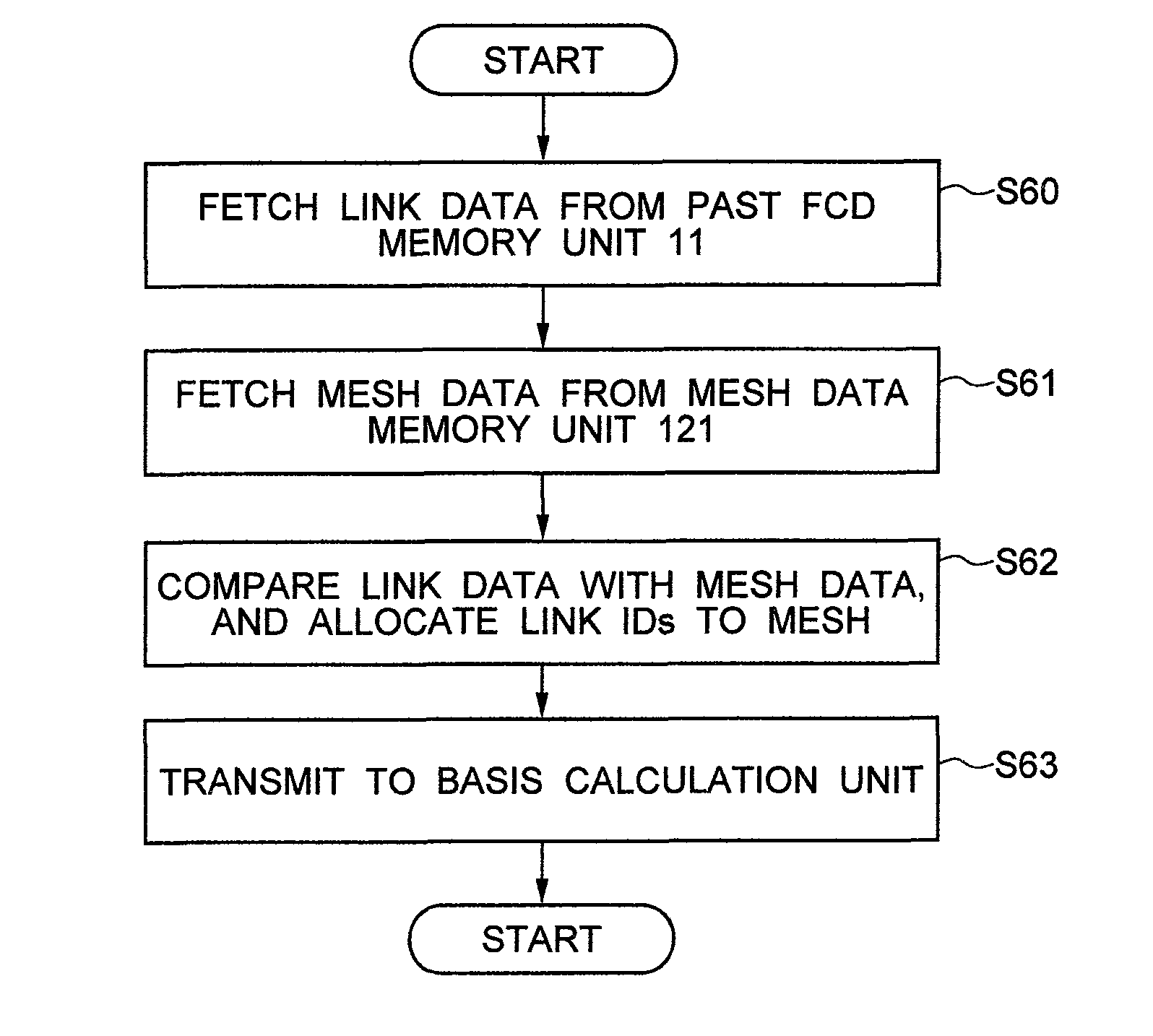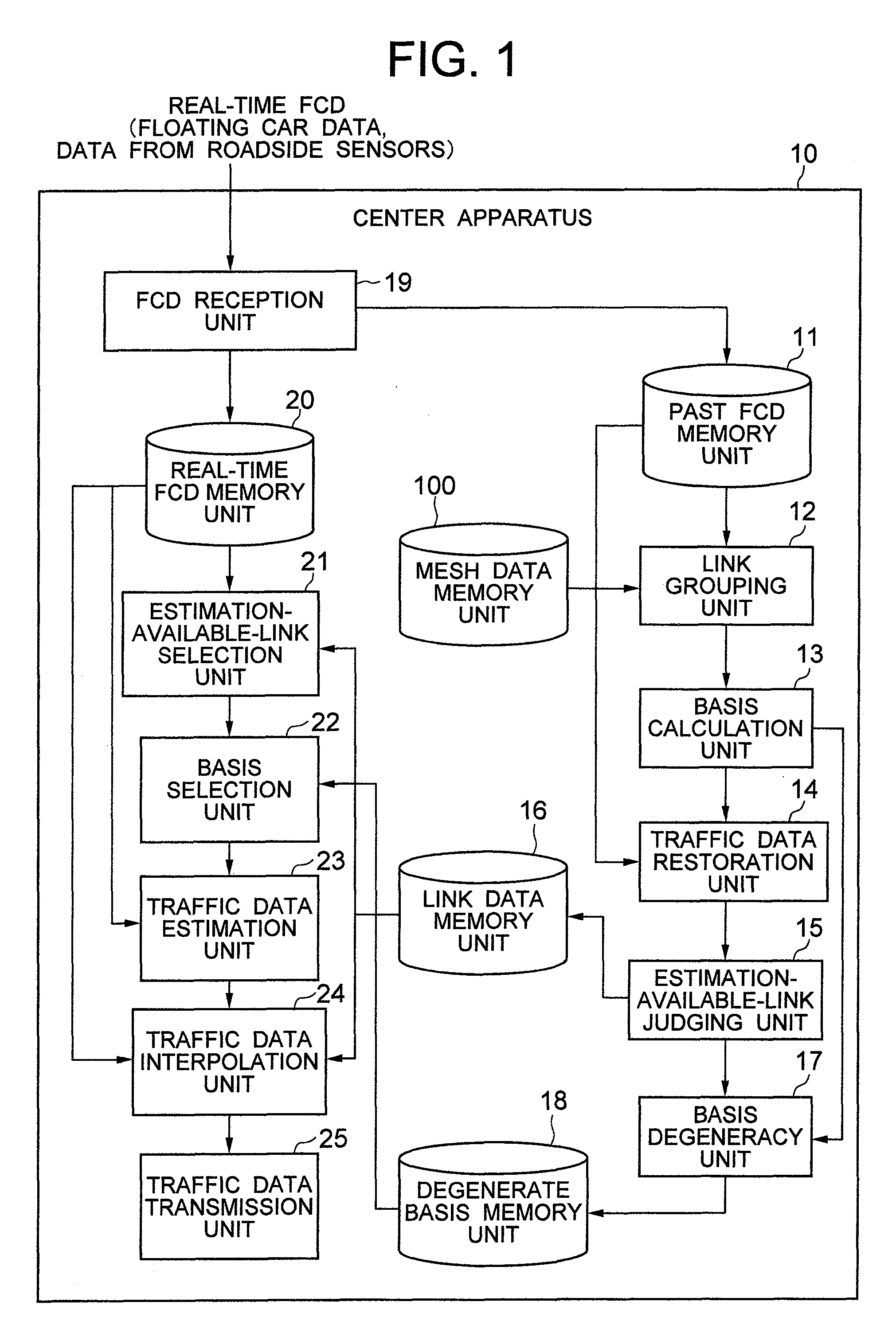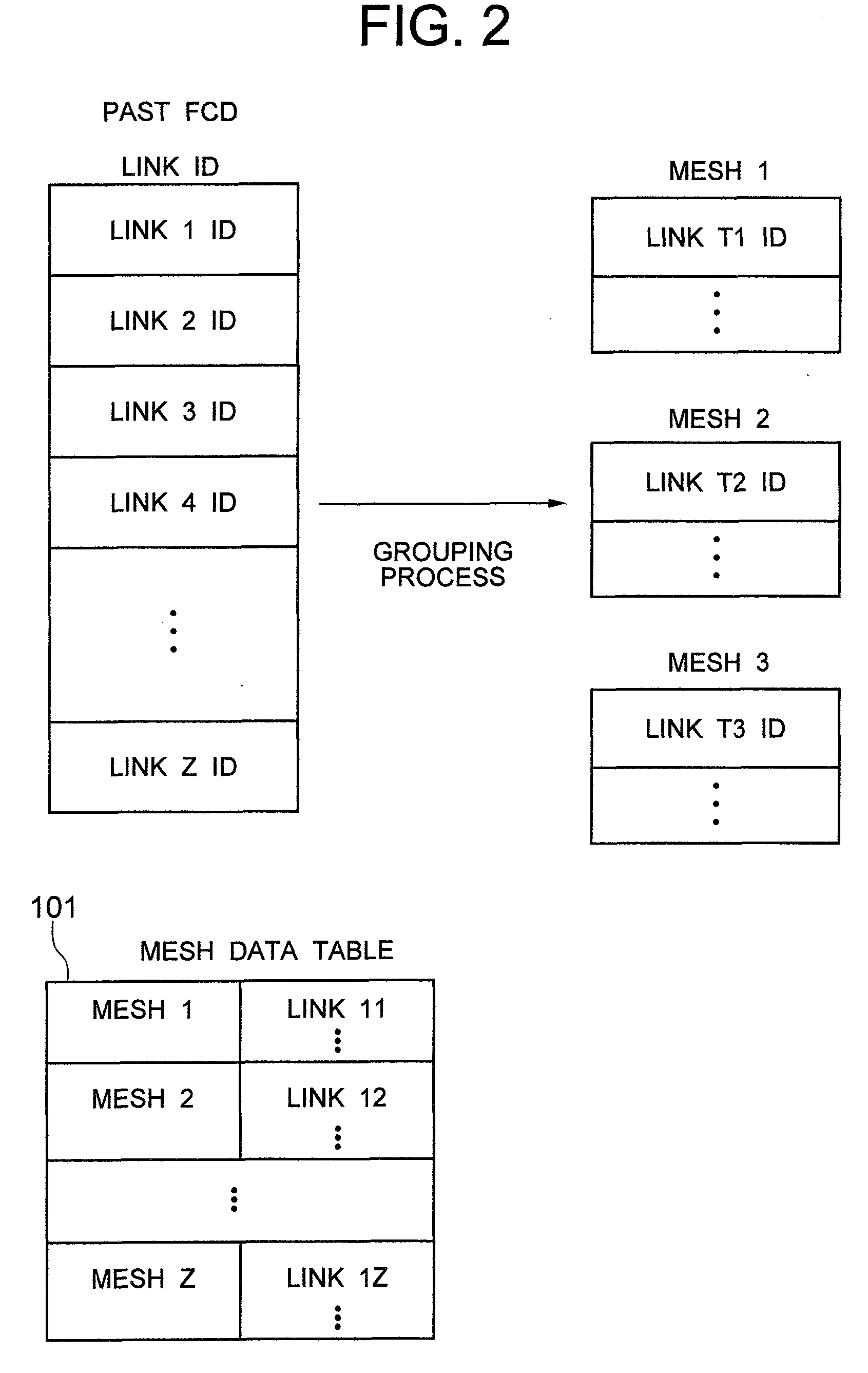Traffic Information Interpolation System
a traffic information and interpolation system technology, applied in the field of interpolation of traffic information, can solve the problems of inability to properly perform information display or route search in the car navigation system, and inability to collect floating car data spatial and temporal deficiency, etc., to achieve high precision, stable and highly precise spatial interpolation results
- Summary
- Abstract
- Description
- Claims
- Application Information
AI Technical Summary
Benefits of technology
Problems solved by technology
Method used
Image
Examples
embodiment 1
[0034]FIG. 1 is a functional block diagram for a traffic data collection / distribution system as an embodiment of this invention. As Shown in FIG. 1, the traffic data collection / distribution system consists mainly of a center apparatus 10. The center apparatus 10 comprises a past FCD memory unit 11; a basis calculation unit 13; a link grouping unit 12; a traffic data restoration unit 14; an estimation-available-link judging unit 15; a link data memory unit 16; a basis degeneracy unit 17; a degenerate basis memory unit 18; an FCD reception unit 19; a real-time FCD memory unit 20; an estimation-available-link selection unit 21; a basis selection unit 22; a traffic data estimation unit 23; a traffic data interpolation unit 24; a traffic data transmission unit 25; and a mesh data memory unit 100.
[0035]In the center apparatus 10, the past FCD memory unit 11 stores the FCD received by the FCD reception unit 19 in the past. The stored, past FCD are administrated by the link IDs attached to ...
embodiment 2
[0086]FIG. 16 shows a variation of the traffic data system as the embodiment of this invention shown in FIG. 1. In this modified embodiment, the whole system is divided into three sections: traffic data transmission apparatus 30, vehicle-borne terminal apparatus 31 and traffic data center apparatus 200. Further, the degenerate basis generation function and the link data generation function are located in the traffic data center apparatus 200, and the traffic data interpolation function is situated in the vehicle-borne terminal apparatus 31. The traffic data transmission apparatus 30 and the vehicle-borne terminal apparatus 31 can communicate with each other through communication networks (not shown) such as portable telephone channels or the Internet. Or the data transmitted from the traffic data transmission apparatus 30 may be received by the vehicle-borne terminal apparatus 31 through broadcasting channels such as FM multiple broadcasting channels or terrestrial digital broadcast...
PUM
 Login to View More
Login to View More Abstract
Description
Claims
Application Information
 Login to View More
Login to View More - R&D
- Intellectual Property
- Life Sciences
- Materials
- Tech Scout
- Unparalleled Data Quality
- Higher Quality Content
- 60% Fewer Hallucinations
Browse by: Latest US Patents, China's latest patents, Technical Efficacy Thesaurus, Application Domain, Technology Topic, Popular Technical Reports.
© 2025 PatSnap. All rights reserved.Legal|Privacy policy|Modern Slavery Act Transparency Statement|Sitemap|About US| Contact US: help@patsnap.com



